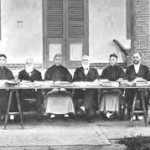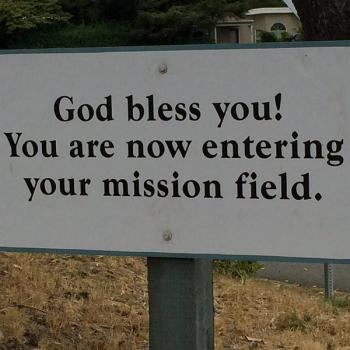Studying context is the single most important step in the interpretation process. If so, we have to ask, “What is context?”
I’ve been proposing a 5-step process to interpret Scripture that anyone can use, even if they have no other resources except the Bible. In Chinese, I summarize them in this way: 述-印-境-提-释 (shù-yìn-jìng-tí-shì). In English, “Restate-Impressions-Context-Questions-Explain.” I have a bookmark (in color or black-white) that reminds people of the entire process.
Mind the Gap
Most of the methods I’ve seen do not give adequate and balanced attention to “context.” As a result, preconceived theological ideas can subtle take over our reading of the text. This a major gap in the process.
上下 主脉 比喻 (shàngxià zhǔmài bǐyù)
上文 (shàngwén) –– Prior Context
What comes before the passage we’re studying? How does what came before lead to our present passage? Most important is the immediately prior paragraph(s), then the more distance preceding sections.
This prior context also includes quotes and allusions to events in the Old Testament. We need to first understand what a line meant in its original OT context we can grasp its full significance in the passage that we are studying now.
下文 (xiàwén) –– Post Context
How does our passage lead to and support what follows? As best as possible, we need to be familiar with the key ideas and message of the paragraphs (and chapters) that follow. Various writers repeat certain ideas, words, and themes throughout their book(s). Additionally, the theology in the first part of an epistle will inform the applications in the letters’ second half.
主题 (zhǔtí) –– Themes
What are the big themes that the passage references? Interpreters often struggle to distinguish primary and secondary ideas. If we want to have any hope of doing so, we need to slow ourselves down and identify the range of concepts and ideas presented in the text.
脉络 (mài luò) ––– Sequence of Thought
This step makes a big difference in finding exceptional insights that go beyond whatever seems to be the plain meaning of the text.
As much as it possible, our goal must constantly be to think the Bible’s thoughts after it. This means that we insist on grasping the flow of the author’s argument or story. Where are the logical transitions? How does one thought stem from and lead to other ideas?
In every class I teach, I ask my students the same question: “What are the most important words in the Bible?” It’s not “love”, “cross,” “salvation,” etc . . . I tell them that the most important words in the Bible are conjunctions!
(By way of reminder, conjunction is “a word that connects (conjoins) parts of a sentence.” These are words like “therefore”, “because”, “since”, “in order to”, “but”, “so that”, “if”, etc.)
Additionally, we want to identify the “units of thought” within the passage. A story or argument is usually put together in idea chunks; typically, 4-8 sentences will assert or defend a thought before giving way to another chunk of sentences designed to make a particular point.
No one can retain all the individual words, phrase and sentences of a book. Therefore (← this is a conjunction), it is critical that we group ideas in units of thought that help us grab hold of the big picture, the author’s broad flow of thought. That is something we can remember and apply much easier.
比较(or 对比)(bǐjiào or duìbǐ) –– Comparison (or Contrast)
It nearly every page of the Bible, one will find a flurry of comparisons and/or contrasts aimed to drive home a point or provoke a response. Sometimes they are subtle––mere images or perhaps they are separated by a few sentences. Very often, when identifying a passage’s themes, you will notice that a comparison/contrast is being made.
This is an easy step that easily gets overlooked.
In the next post, I’ll touch on the last part of “context” and what one needs (and doesn’t need) to interpret the Bible.
Photo Credit (Context): CC 2.0/wikipedia


















